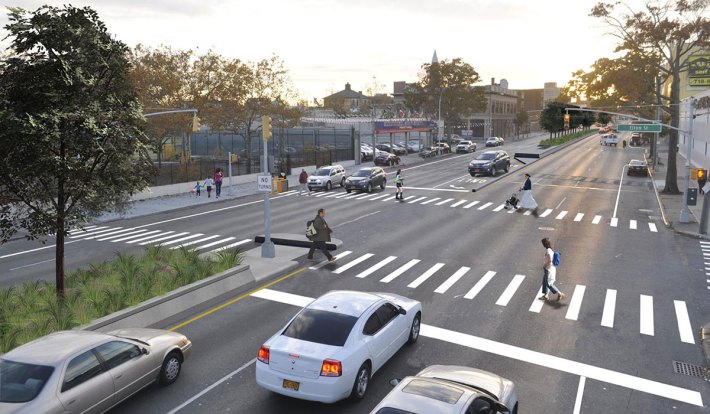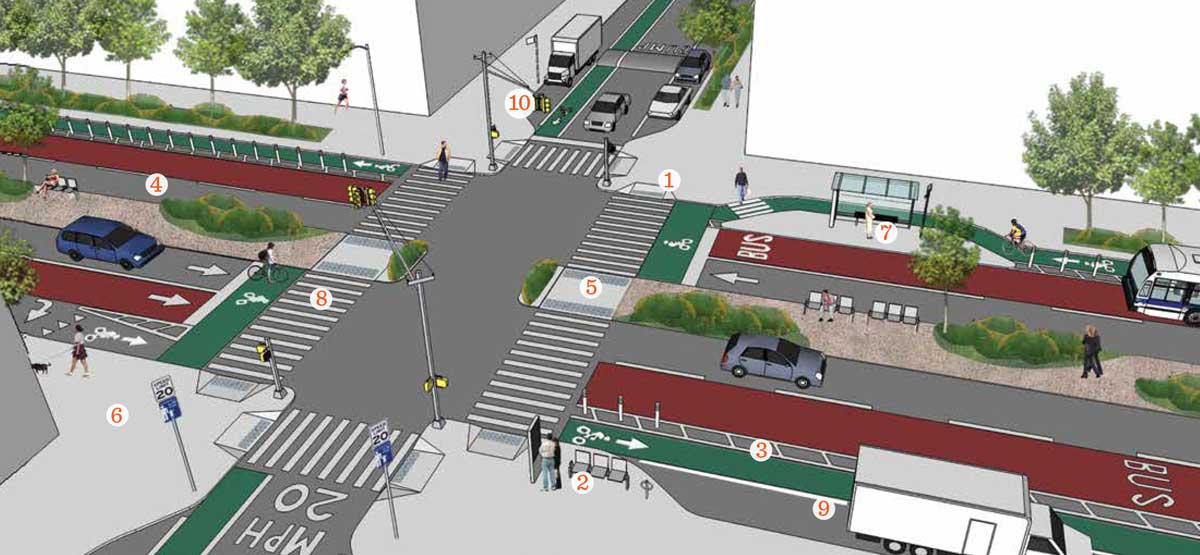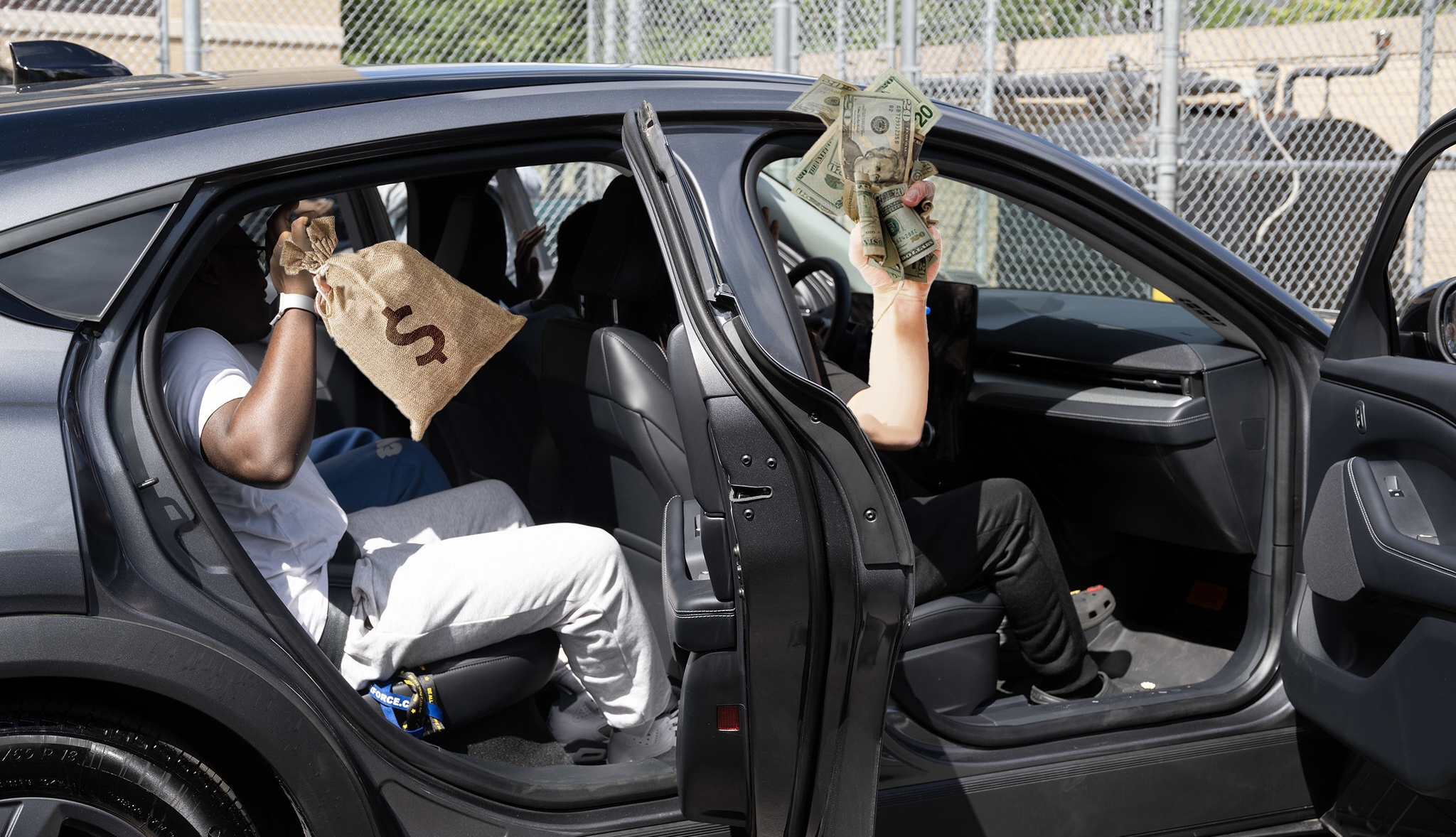The de Blasio administration needs to redesign streets more thoroughly if it's going to reach the goal of eliminating traffic deaths, Transportation Alternatives says in a new report.
While traffic fatalities have dropped during the de Blasio administration, progress has stalled: 2016 marked the first year of the Vision Zero era without a significant improvement.
TA's report, "The Vision Zero Street Design Standard," lays out guidelines to maximize the impact of DOT safety projects. All Vision Zero projects should discourage speeding, be accessible regardless of age or ability, and encourage walking, biking, and transit, says TA:
By controlling speed and nudging drivers towards safer behavior, injuries and deaths can be avoided. In other words, street designs can protect road users from the consequences of human error, and critically, those changes are cast in concrete.
The report provides a checklist of 10 design treatments to achieve those goals, including protected bike lanes, exclusive pedestrian signals, and narrower vehicle lanes -- elements that DOT already deploys, but without the consistency that Vision Zero demands.
Even DOT's better safety projects fall short of the standard. The redesign of Queens Boulevard, where DOT added bike lanes and pedestrian safety improvements, only has three of the ten elements (ADA accessibility, protected bike lanes, and pedestrian islands).
And the Atlantic Avenue "Great Streets" project includes only pedestrian islands and better accessibility.

TA says that "a large-scale program of street redesign" based around these design principles would accelerate the safety impact of Vision Zero. But City Hall has not committed sufficient funds to "feasibly reconstruct all [of NYC's] dangerous arterial roads within 50 years."
For two years running, T.A. and the City Council have called on the mayor to commit more funding to Vision Zero street redesigns. Will 2017 be the year that de Blasio delivers a budget to match his ambitious street safety targets?






